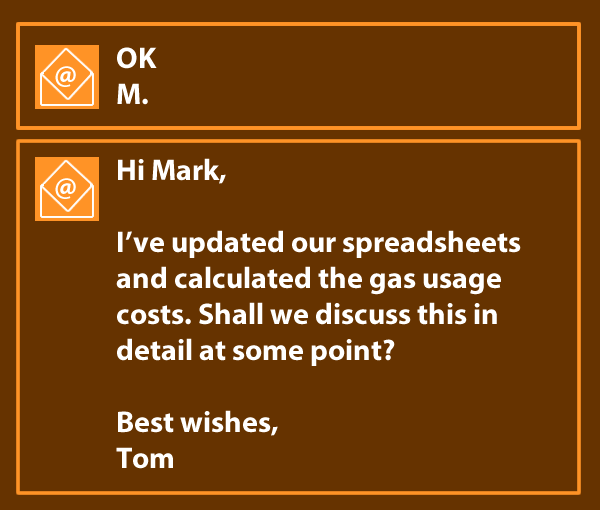
March 18, 2016, by Sunita Tailor
What emails reveal about your interactional style
Writing emails can be a tricky business. Are you guilty of unwittingly pressing a ‘send’ button before realising that the message that you’ve just sent is ambiguous or might be taken the wrong way? On the other side of the spectrum, there’s spending precious hours of your working week re-reading and re-writing emails and agonising over their content.
The short, the long and the ugly
The short
We probably all had our fair share of monosyllabic or disyllabic replies. ‘Yes’, ‘ok’ and ‘sure’ most likely constitute a significant percentage of emails stored in any inbox. Admittedly, we’ve probably sent a considerable number of these ourselves.
Authors of these very economic messages waste no time or, as a matter of fact, valuable snippets of binary code to communicate what they have to say. They get to the point. Fast.
The long
There are the long-winded emails which consist of paragraphs and paragraphs of text. Composed with a surgical precision akin to that of most renowned writers of prose, long emails take… well, long to read and even longer to reply to. Composing one can, however, sometimes be a necessity.
The ugly
Finally, there are also the typo-ridden messages. Depending on the circumstances, you may or may not require skills excelling those of Alan Turning to decipher one of them. We’ve also been the culprits of sending these out. These smartphone keyboards are not easy to use after all!
Getting the balance right
Despite there being a few cases when specific features of different formats of email may be problematic, achieving balance between length and clarity is not difficult. It’s simply worth weighing up the following factors:
- How much you can rely on the level of knowledge shared by you and your addressee?
- The context of a particular interaction
- The conventions typically adopted in your workplace
- The formats of email typically used by your addressee
- The urgency of a particular workplace task
Typos may be unavoidable in many circumstances but it’s best to be extra vigilant, particularly when sending important messages.
Tone of email
Apart from features of different formats our emails take, one of the two key ingredients that play a crucial role in effective email communication is the adoption of the most appropriate interactional styles. While frequently it really is just a case of writing a brief message and hitting ‘send’, there are certain situations when you do want to take the extra time to compose a message carefully.
If that is the case, it is worth paying close attention to the interactional styles used in your email. These are, in general, grouped into two broad categories:
- more collaborative and person-orientated style
- more competitive/assertive and task-orientated style
These two can be easily blended together and used appropriately to suit the needs of a particular exchange.
As email communication lacks many features of face-to-face conversations (gestures, facial expressions, tone of voice, etc.), it is also more prone to miscommunication. In certain situations, badly composed emails may also damage our rapport with other colleagues.
In a bid to enable us to avoid this, IBM is currently in the process of developing a system that allows us to determine the tone of our emails. Using principles similar to those well established within the field of linguistics, Tone Analyser enables us to establish how much emphasis is placed on a particular type of interactional style. So, whether there is more focus on person- or task-orientated aspect of communication.
While still being in test stages, Tone Analyzer provides interesting insights into how our emails may be potentially interpreted by others. If you’d like to see how it works, give Tone Analyzer a test drive.
Dr Malgorzata Chalupnik
LiPP Research Fellow
No comments yet, fill out a comment to be the first


Leave a Reply